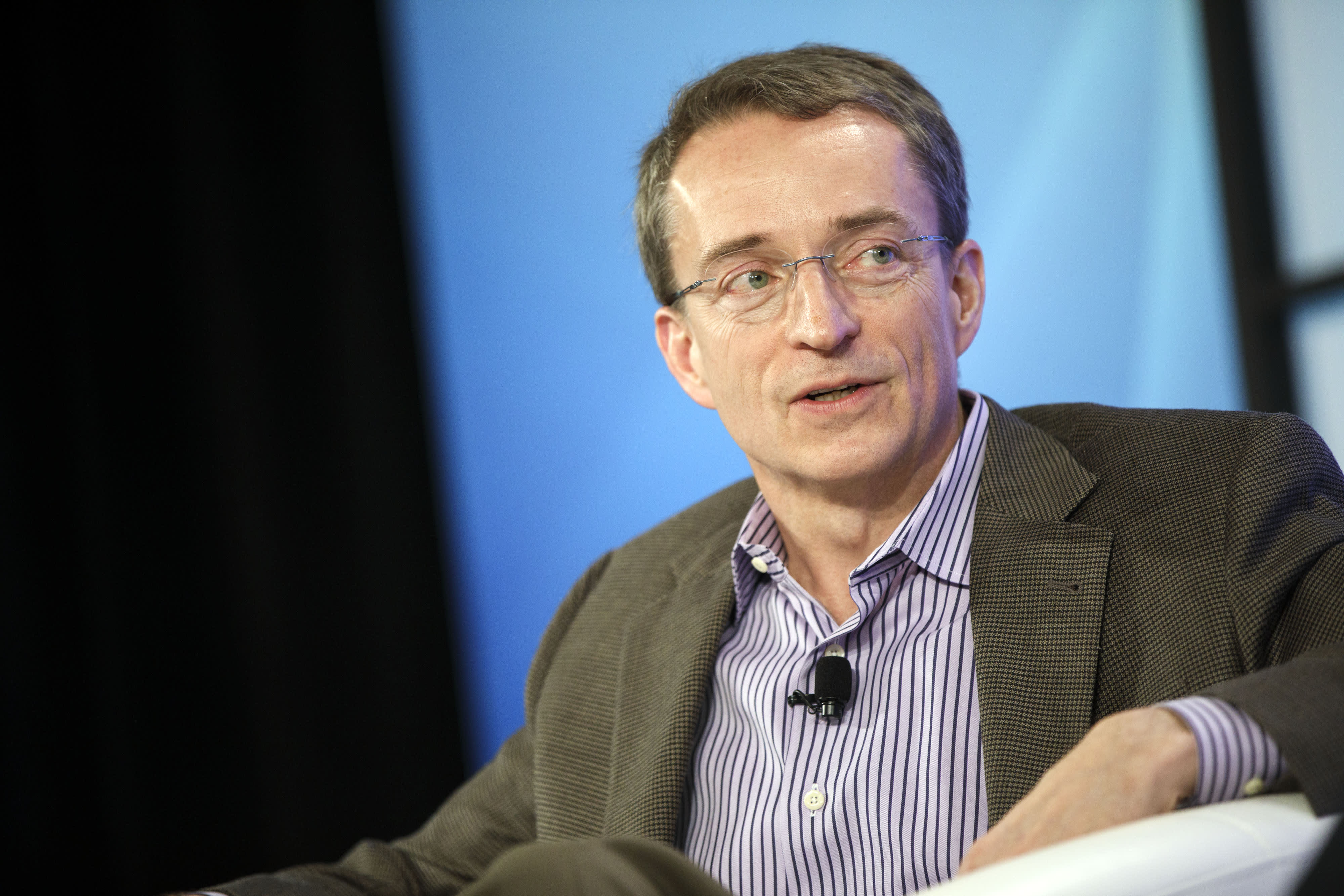
Pat Gelsinger, CEO of Intel, speaks in Santa Monica, Calif., on March 9, 2017, in a photo taken when he was CEO of VMware.
Patrick T. Fallon | Bloomberg | Getty Images
In his first extended public remarks since becoming Intel CEO, Pat Gelsinger offered an underlying message: Intel, the American chipmaking giant, is getting its swagger back.
Intel, contrary to some industry expectations, said on Tuesday would not shift its decades-old strategy to become a chip design firm that outsources manufacturing. Instead, it will double down on manufacturing, and invest $20 billion in two new chip factories in Arizona.
“Intel is back. The old Intel is now the new Intel,” Gelsinger said.
Investors had been hoping that Gelsinger, who started his career with over 30 years at Intel, could right the ship after years of challenges in which its most advanced chip development stalled and was passed by Asian rivals, like TSMC, which can currently manufacture smaller transistors and thus superior chips.
On Tuesday, Gelsinger was energetic when talking about esoteric semiconductor technologies, and a lot of his talk seemed to be aimed at getting Intel’s workforce fired up.
“We’re bringing back the execution discipline of Intel. What I’ve called the Grove-ian culture that we do what we say that we’re doing to do,” Gelsinger said, referring to legendary CEO Andy Grove, who built Intel into a U.S. tech juggernaut during the 1980s and 90s.
“We have that confidence in our execution. That our teams are fired up. You know, if we said we’re going to do X, we’re going to do 1.1x every time we make a commitment,” Gelsinger said.
Investors loved it — the stock rose more than 6% in extended trading on Tuesday.
The biggest change
Gelsinger on Tuesday showed that he is wasting no time making big changes. The most significant shift in strategy is a new division called Intel Foundry Services that taps into one of the biggest trends in the semiconductor world.
Many top technology firms and chip makers have moved to a model where they design chips, but turn to Asian factories run by companies such as TSMC and Samsung to manufacture them.
Intel has only dabbled in manufacturing chips for other companies, instead preferring to design its own high-performance chips and manufacture them as well.
It’s going to keep manufacturing most of its high-end chips, but now, Intel will run those factories for other companies too — and they’re based in the U.S. and Europe, for customers like governments for whom that’s important.
“I believe this is the first time Intel is actually, seriously doing what it needs to take to create a ‘real’ foundry,” said Patrick Moorhead, analyst at Moor Insights and Strategy.
The foundry strategy also highlights Intel’s position as a major American manufacturer, which many lawmakers have sought to protect with incentives as supply chain problems and chip shortages have revealed issues with having many of the fastest chips manufactured in places like Taiwan and Korea.
Intel’s announcement and its $20 billion investment in new factories on U.S. soil suggest that in a few years, companies that might have been forced to go to Asia to manufacture semiconductors could be able to get similar performance from chips fabricated in places like Arizona.
“Today’s announcement by Intel is proof that our legislation investing in semiconductor manufacturing helps grow Arizona’s economy, creates good-paying jobs across our state, helps enhance our national security, and ensures our country continues to lead in innovation,” Arizona Senator Kyrsten Sinema said in a statement.
Gelsinger said that government incentives weren’t the only reason Intel is making this move.
“This is the Intel strategy, period, full stop. It does not depend on a penny of government support, or state support, or any other investments to make it successful,” Gelsinger said. Intel said on Tuesday that it believed the foundry market could be worth $100 billion in 2025.
Intel suggested that there was a lot of demand for its foundry services, especially from big American technology companies. It said it’s received enthusiasm for its foundry services from companies including Amazon, Cisco, Google, IBM and Qualcomm. Microsoft CEO Satya Nadella even appeared in a short video to endorse the plan.
Not on that list was Apple, which replaced Intel chips with its own chips in its latest line of laptops, spurring the most recent round of handwringing about Intel’s technical future. Intel is currently running advertisements comparing its chips to Apple’s.
But Gelsinger had so much swagger on Tuesday that he said he believes that Intel might be able to win that business back with its new foundry unit.
“We’ll also pursue customers like Apple and say, ‘Boy, you know, is it possible to build and expand on your foundry capabilities as well?'” Gelsinger said.























